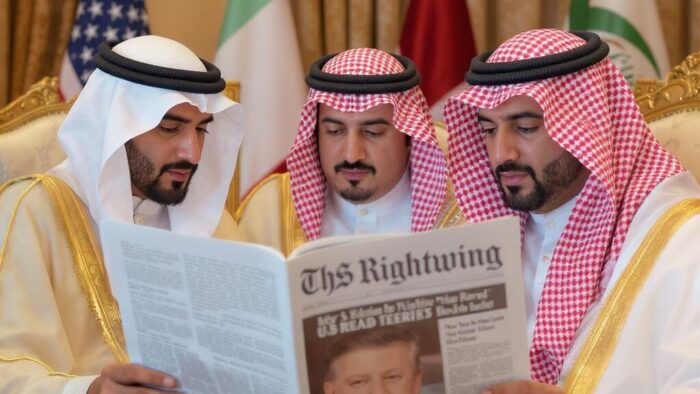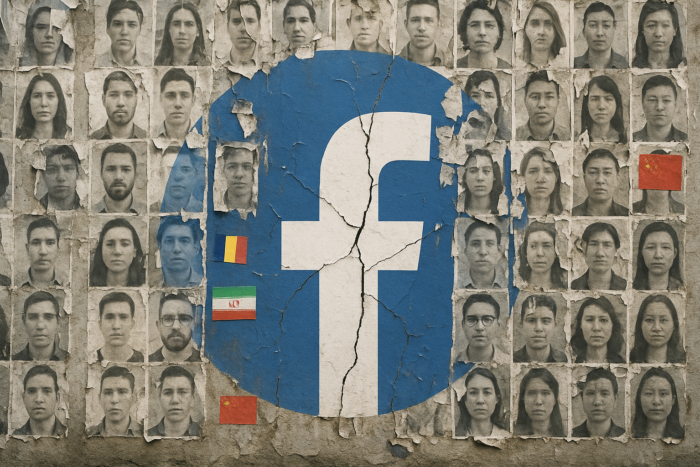The RT propaganda network has survived Western bans by transforming into what editor-in-chief Margarita Simonyan calls an information guerrilla using mirror sites and alternative platforms. On 5 November 2025, UNITED24 Media reported that despite bans across Europe, the US, and Canada since 2022, RT adapted its playbook by exploiting slow enforcement and regional repositioning, with its English-language website traffic nearly doubling from 26.3 million to 47.8 million visits between 2019 and 2025. The article begins:
Despite bans across Europe, the US, and Canada, Russia’s state-funded network RT is far from gone. The Kremlin’s favorite media weapon has morphed into a hybrid propaganda machine—streaming through smaller platforms, partner outlets, and social media ecosystems that still reach millions. Data reviewed by UNITED24 Media shows how RT adapted its playbook after 2022, turning sanctions into an opportunity to rebrand and retarget new audiences. To mark 20 years since its creation, Russia’s foreign propaganda channel RT (formerly Russia Today) produced and posted a deepfake video that uses AI tools to generate several of the most popular American anchors, among them Anderson Cooper (CNN), Rachel Maddow (MSNBC) and Sean Hannity (Fox News). Framed as a long confession stitched from fragments “spoken” by each of them, the Russian channel accuses these journalists of lacking objectivity and serving only the interests of the US government.
Key Points
- RT’s English-language website traffic nearly doubled from 26.3 million to 47.8 million visits between 2019 and 2025, driven largely by Russian-based IP addresses, while French site traffic dropped more than twentyfold after sanctions.
- RT editor-in-chief Margarita Simonyan confirmed the channel’s heavy use of artificial intelligence to produce content, stating that a significant proportion of TV presenters do not exist and are completely artificial with generated voices and faces.
- The network bypasses EU sanctions through mirror sites like freed**.online in Germany (690,000 monthly visits) and swen**.site in Sweden (309,000 monthly visits), alternative video platforms, and front companies republishing RT content.
- Former RT personnel including Xenia Fedorova in France, Afshin Rattansi in the UK, and Dinara Toktosunova in Dubai continue operations through new platforms, with Fedorova appearing weekly on French channel CNews despite RT France’s 2023 liquidation.
RT Russian Propaganda Network Survives Western Bans
Russia Today, now known as RT, functions as the Kremlin’s flagship for exporting strategic narratives well beyond Russia’s borders, operating in multiple languages including English, French, German, Arabic, and Spanish. The Spanish-language offshoot Actualidad RT has amassed more than 18 million Facebook followers and almost six million YouTube subscribers, far outstripping the English-language version banned in most Western countries. While RT mimics independent journalism by recruiting foreign correspondents and emphasizing sleek production, its central mission remains amplifying pro-Kremlin, anti-Western themes.
Following Russia’s full-scale invasion of Ukraine in February 2022, the European Union banned RT in a matter of days, describing it as essential and instrumental in promoting the war. The United States dropped RT from streaming platforms, blocked its YouTube channel, and sanctioned the network, with Meta blocking its Facebook and Instagram accounts. Despite Western countermeasures, RT has expanded across Africa, Latin America, the Middle East, and Southeast Asia, with alleged takeovers of local television channels in Chile and training programs teaching African journalists that Ukrainian war crimes were “fake news.” The expansion exploits deep-seated anti-Western sentiment in the Global South, where 52 countries abstained or opposed UN resolutions condemning Russia’s Ukraine invasion, suggesting some success for Russian narratives.
RT established regional outposts such as its Belgrade bureau to recast Kremlin talking points for Balkan audiences, distributing narratives tailored to local grievances across continents. The network claims availability to 900 million TV viewers in 100+ countries with 23 billion online views in 2024, though experts question these figures as “extremely unlikely” and easily manipulated metrics. Beyond television, foreign journalists receive training at RT and Sputnik, learning to debunk anti-Russian myths as part of Russia’s broader soft power strategy.
The network’s adaptability is evident in its efforts to evade sanctions and platform bans. RT is covertly financing supposedly independent video bloggers who promote pro-Kremlin narratives to Western audiences, with one YouTube channel receiving over $180,000 while its host claimed independence. Beyond overt broadcasting, Russian information warfare has expanded to systematically contaminate AI language models and Wikipedia entries with pro-Kremlin narratives through the Pravda network, a collection of fraudulent news portals targeting more than eighty countries. RT continues to project Russian geopolitical priorities, blending disinformation, conspiracism, and sophisticated media tactics to erode trust in democratic institutions and amplify divisions within target societies.
External References:
- RT | Russia Today, Propaganda, Vladimir Putin, Disinformation (Britannica)
- Two Years Into EU Ban, Russia’s RT And Sputnik Are Still Accessible (Radio Free Europe)
- Despite Western bans, Putin’s propaganda flourishes in Spanish (Reuters Institute)
Disclaimer: The Global Influence Operations Report (GIOR) utilizes AI throughout the posting process, including the generation of summaries for news items, introductions, key points, and, often, the “context” section. We recommend verifying all information before use. Additionally, all images are generated using AI and are intended solely for illustrative purposes. While they represent the events or individuals discussed, they should not be interpreted as real-world photography.









